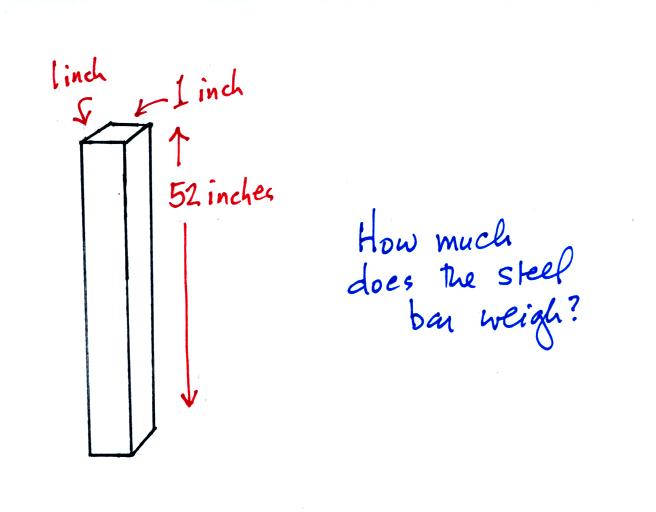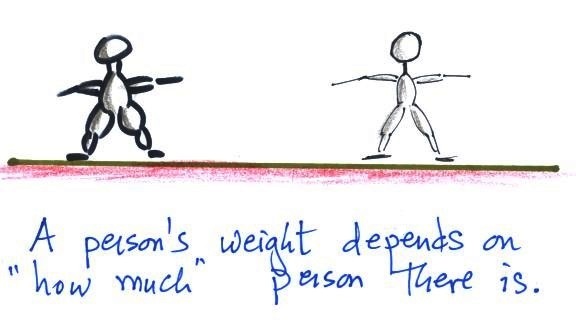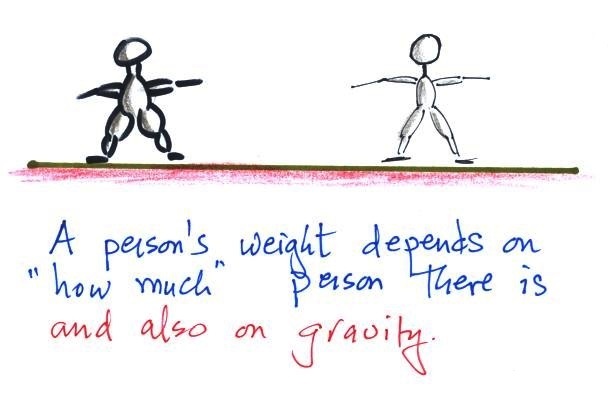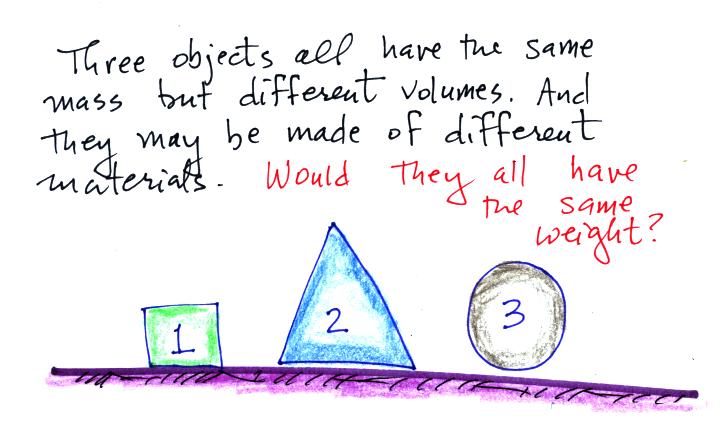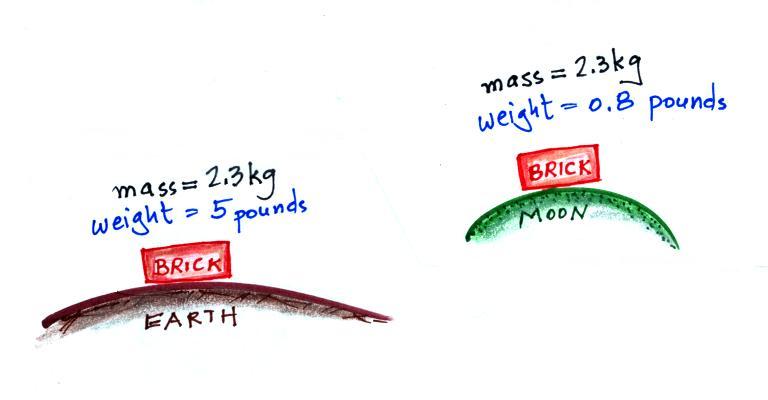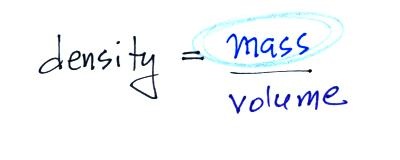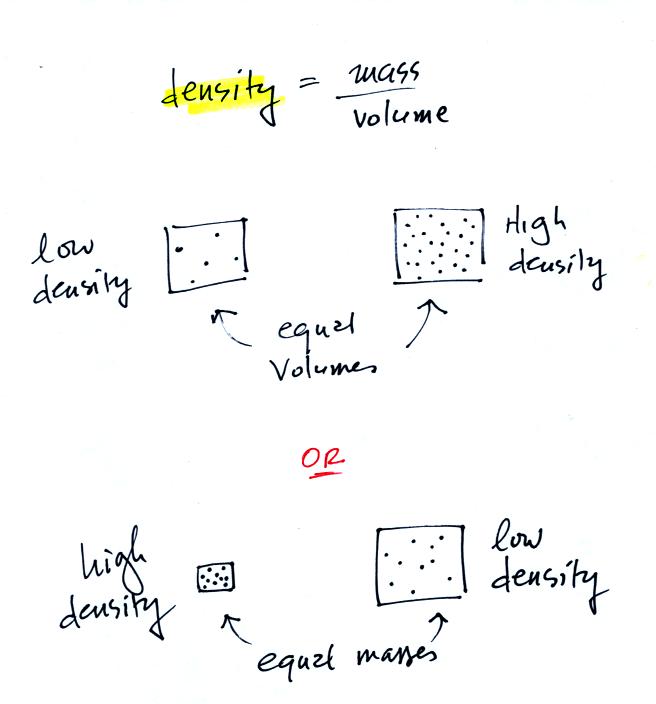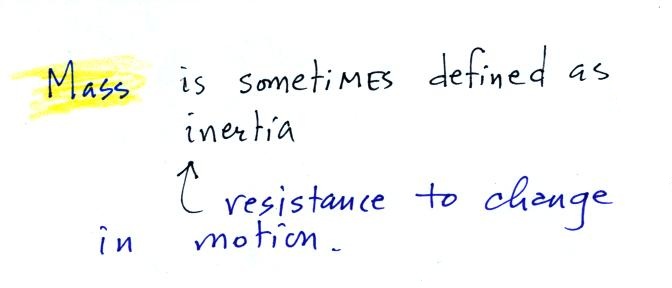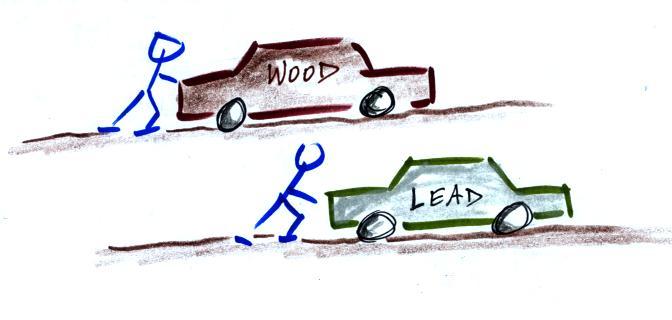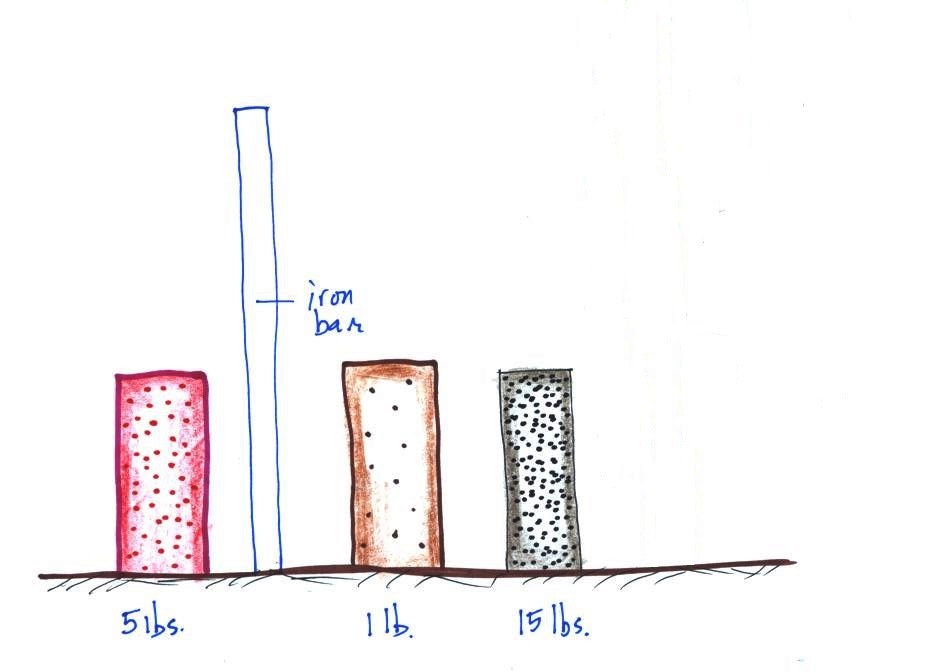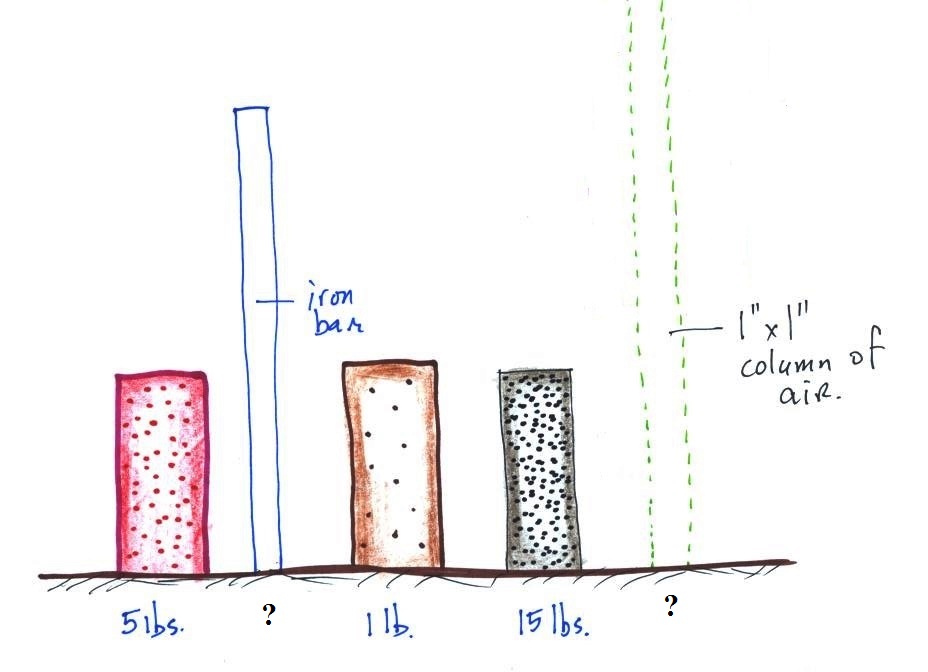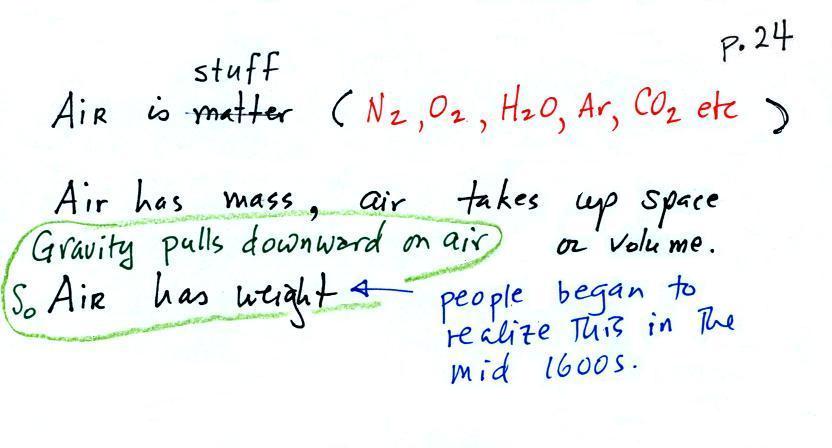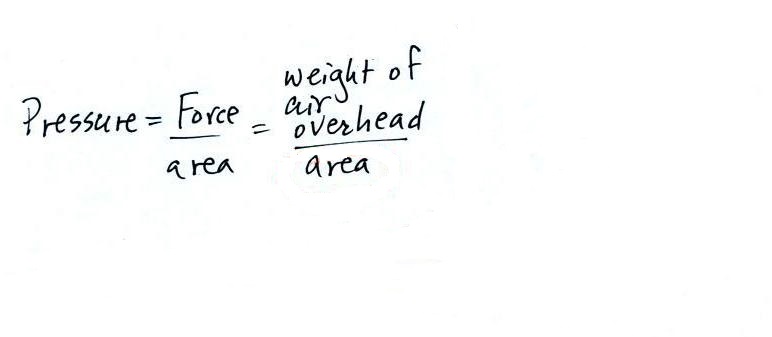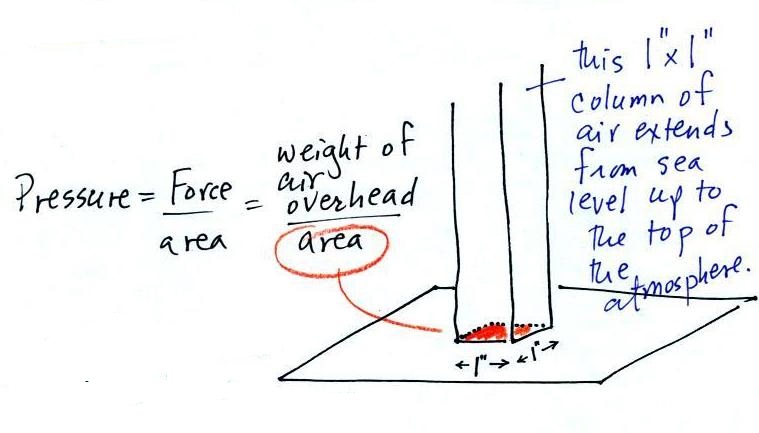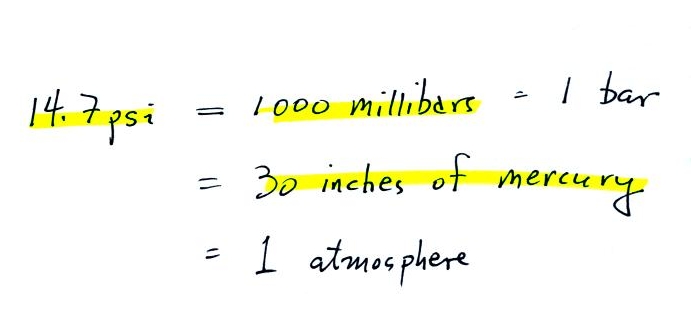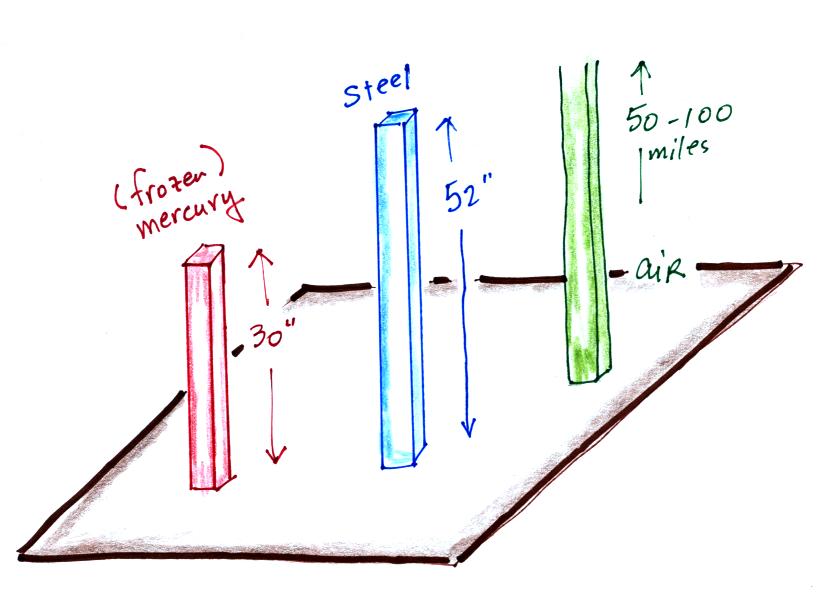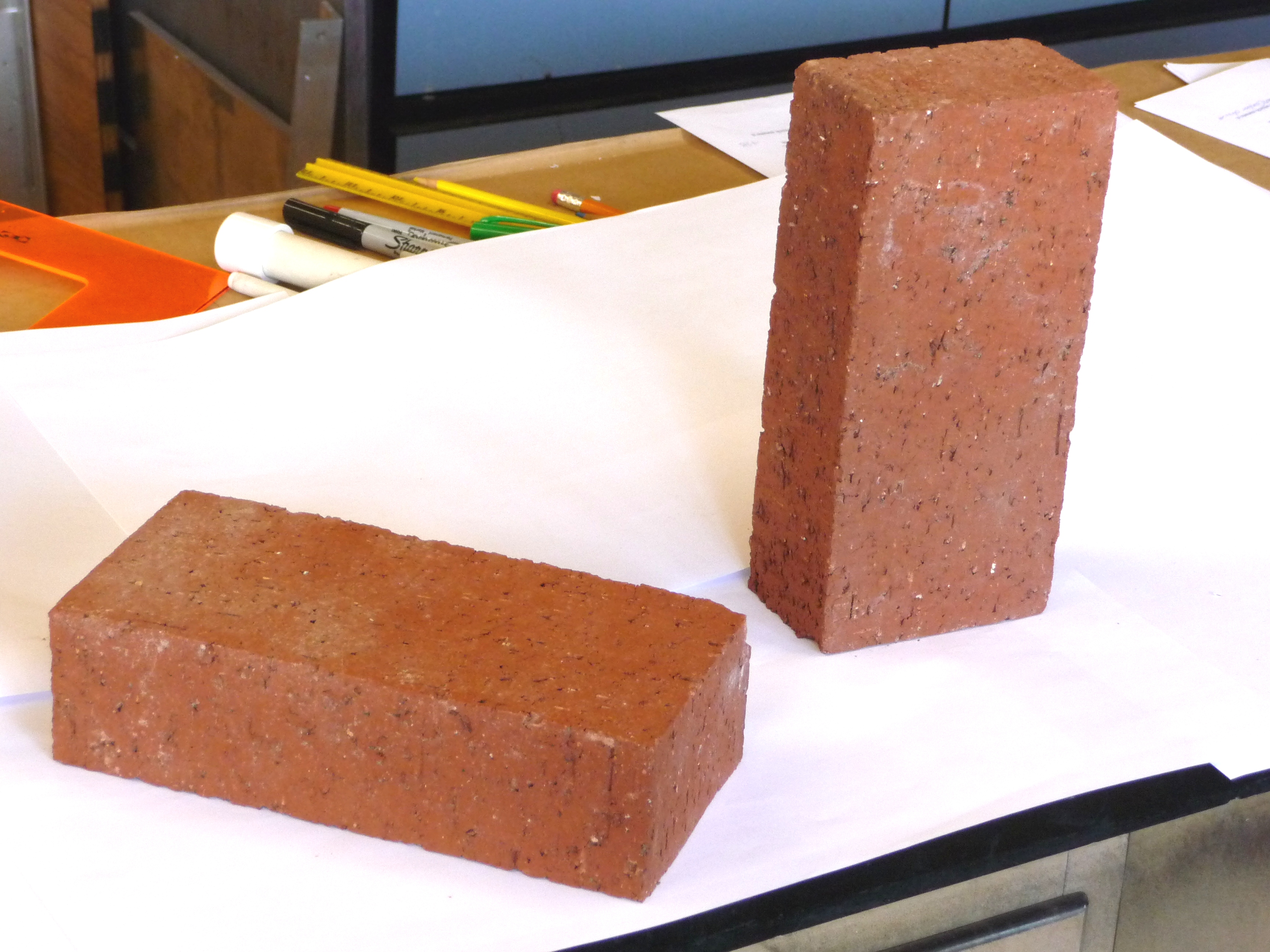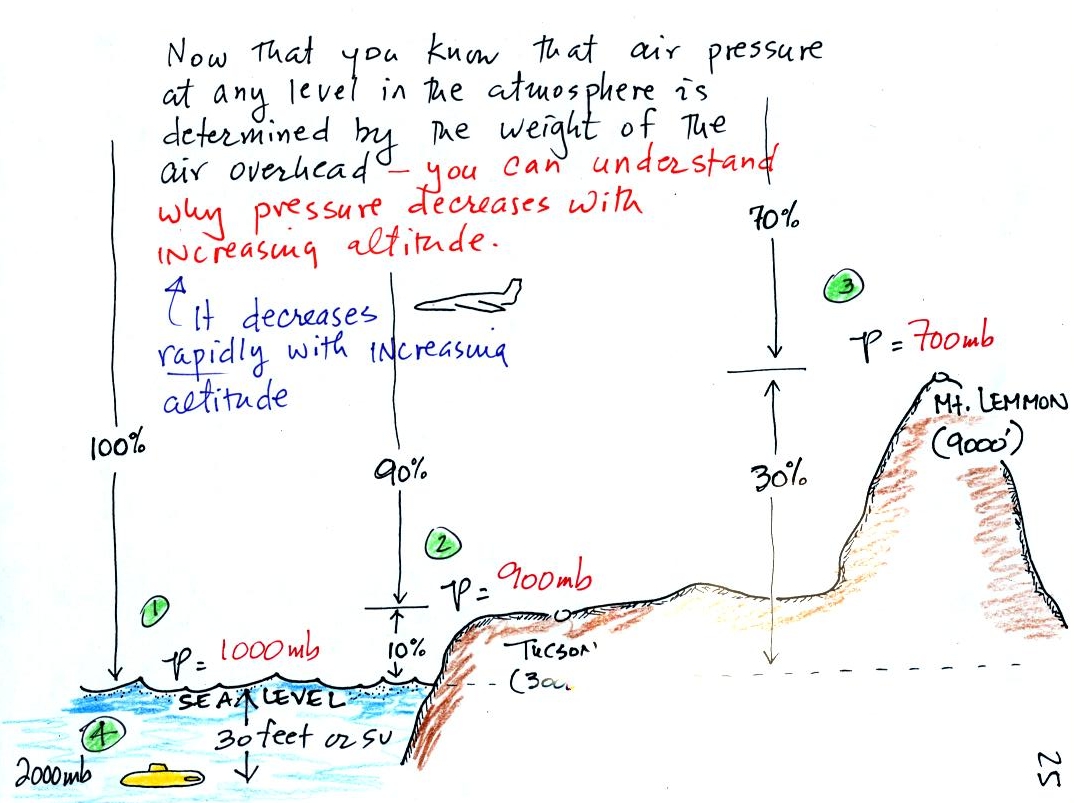Tuesday Sept. 9, 2014
Brandi Carlile "Touching
the Ground" (3:37), "It's Over"
(3:58), "Looking
Out" (3:28), Laura Marling "Blackberry
Stone" (3:31)
A pretty good time-lapse
video and approaching dust storm. The video
was shot last Saturday from the Sky Harbor Airport in
Pheonix. Here's a sketch of a thunderstorm showing
both an updraft and a downdraft.
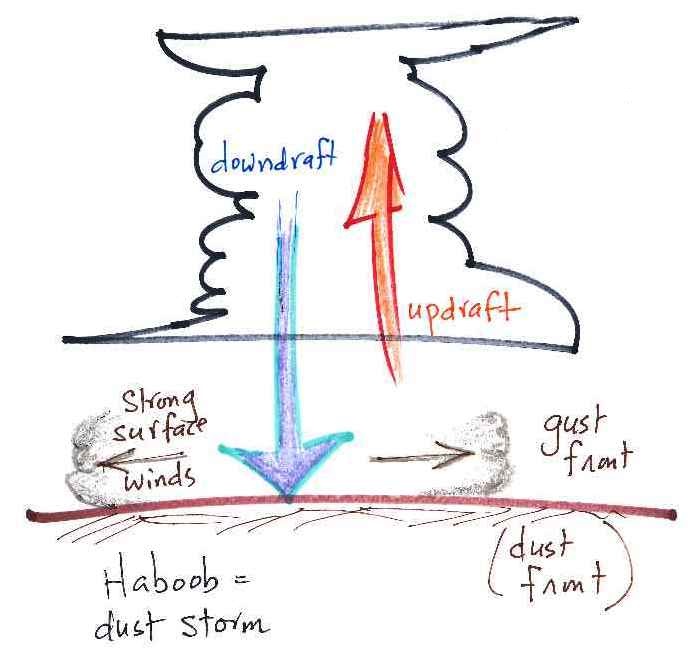
The cloud of dust is found at the leading edge of the cold
air as it moves outward at the ground under the
thunderstorm. Winds behind the gust front can reach
100 MPH which is tornado strength. The video is nice
because you can see the thunderstorm in the distance that
produced the dust storm (also commonly called a
"haboob"). Often you will just see the dust and not
the storm that caused it.
The dust storm was followed by record rainfall and severe
flooding in Pheonix on Monday. See the photo gallery
embedded in this
story from The Weather Channel.
Here is a pretty good
set of photographs from yesterday's flooding in
Tucson from the Arizona Daily Star. Two people died
when they were swept away by flood waters in Tucson.
You can find the rainfall totals on the Pima
County Regional Flood Control District ALERT System.
You can also check Rainlog.org
which has state wide coverage.
Today's class was all (perhaps too much
so) about mass, weight, density, and especially
pressure. Weight is something you can feel so I
passed an iron bar (it's sketched below) around
class. You were supposed to estimate it's
weight. The fact that it was 1" by 1" is
significant. More about the bar later in today's
notes.
A couple of small plastic bottles were
passed during class. One contained some water the
other an equal volume of mercury (here's the source
of the nice photo of liquid mercury below at right).
I wanted you to appreciate how much heavier and denser
mercury is than water.
Thanks for being careful with the
mercury. A spill would have shut down the classroom
and perhaps more of the building until the hazardous
materials people could come in and clean it up. It
isn't so much the liquid mercury that is a hazard, but
rather the mercury vapor. Mercury vapor is used in
fluorescent bulbs (including the new energy efficient CFL
bulbs) which is why they need to be disposed of
carefully. That is something we'll mention again
later in the class.
I am hoping that you will remember and understand the following
statement
atmospheric
pressure at any level in the atmosphere
depends on (is determined by)
the weight
of the air overhead
We'll first review
the concepts of mass, weight, and density. I've inserted
some numbers to help with the organization.
1. weight
A good place to start because we are most familiar with
this term. We can feel weight and we routinely
measure weight.
A person's weight also depends on something
else.
A person's weight
depends on the person and also on the pull of gravity.
We
measure weight all the time. What units do
we use? Usually pounds, but sometimes ounces
or maybe tons.
Mass is a better way of expressing the amount of
matter in an object.
2. mass
Grams (g) and kilograms (kg) are commonly
used units of mass (1 kg is 1000 g).
3. gravitational
acceleration
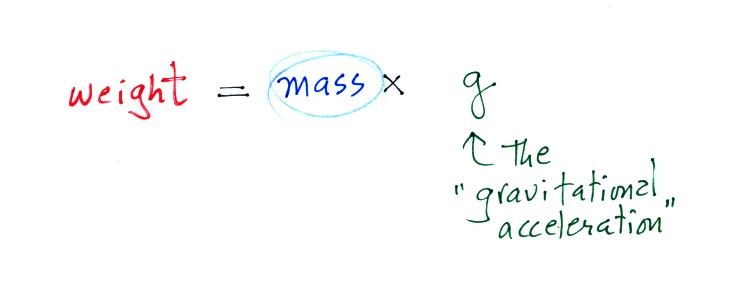
On the surface on the earth, weight is mass times a
constant, g, known as the gravitational
acceleration. We tend to use weight and mass
interchangeably: one kilogram (units of mass) equals 2.2
pounds (units of weight) because we spend all our lives on
earth where the value of the gravitational acceleration never
changes.
On another planet the value of g would be
different. If you click here
you'll find a little (actually a lot) more information about
Newton's Law of Universal Gravitation. You'll see how
the value of g is determined and why it is called the
gravitational acceleration. These aren't details you
need to worry about but I feel they should be available in
case you're curious.
Here's a question to test your understanding.
The masses are all the same. On the earth's surface the
masses would all be multiplied by the same value of g.
The weights would all be equal. If all 3 objects had a mass
of 1 kg, they'd all have a weight of 2.2 pounds.
This next figure wasn't shown or
discussed in class today. Here's
a situation where two objects with the same mass
would have different weights
On the earth a brick has a mass of about 2.3 kg and weighs 5
pounds. If you were to travel to the moon the mass of the
brick wouldn't change (it's the same brick, the same amount of
stuff). Gravity on the moon is weaker (about 6 times weaker)
than on the earth because the moon is smaller. The brick
would only weigh 0.8 pounds on the moon.
The brick would weigh almost 12 pounds on the surface on
Jupiter where gravity is stronger than on the earth.
The three objects below
were not passed around class (one of them is pretty
heavy). The three objects all had about the same
volumes. One is a piece of wood, another a
brick, and the third something else.
A student volunteer was able to determine
relatively easily which was which by lifting each of the
objects and judging its weight.
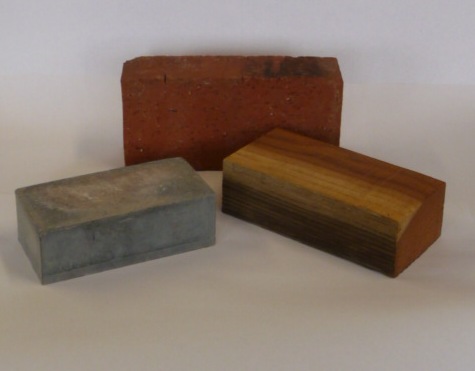
The brick in the back
weighed about 5 pounds, the piece of wood about 1 pound. The
third object was made out of lead and weighed 15 pounds.
Here we had three objects of about the same size with different
weights. That means they each had different masses since
weight depends on mass. Thee different amounts of material,
three different masses, were squeezed into roughly the same
volume.
4. density
The three objects have very different
densities.
The bottle of mercury passed around
class weighed more than the bottle of water even though
the volumes were equal. The mercury had more mass
and a higher density than the water. Densities of
some common materials are shown below.
material
|
density g/cc
|
air
|
0.001
|
redwood
|
0.45
|
water
|
1.0
|
iron
|
7.9
|
lead
|
11.3
|
mercury
|
13.6
|
gold
|
19.3
|
platinum
|
21.4
|
iridium
|
22.4
|
osmium
|
22.6
|
g/cc = grams per cubic centimeter
Note also that lead
is denser than iron, mercury is denser than
lead. I
wish I could bring in brick size pieces of
gold, platinum, iridium, or osmium to pass
around class. They're even denser and
would be even heavier than the lead and
mercury.
We'll be more concerned about air in this
class than wood, brick, or lead.
In the first example below we have two equal
volumes of air but the amount in each is different (the
dots represent air molecules).
The amounts of air (the masses) in the second example are the
same but the volumes are different. The left example
with air squeezed into a smaller volume has the higher
density.
Here's a more subtle concept.
What if we were in outer space with the three wrapped blocks of
lead, wood, and brick. They'd be weightless.
Could we tell them apart then? They would still have very
different densities and masses but we wouldn't be able to feel how
heavy they were.
5.
inertia
This definition comes from Newton's 2nd law of motion
F = m a
F is force, m is mass, and a is acceleration. We can
rewrite the equation
a = F/m
This shows cause and effect more clearly. If you exert a
force (cause) on an object it will accelerate (effect).
Acceleration can be a change in speed or a change in direction (or
both). The acceleration will be less when mass (inertia) is
large.
I think the following illustration will help to
understand inertia.
Two stopped cars. They are the same size except one is
made of wood and the other of lead. Which would be hardest
to get moving (a stopped car resists being put into motion).
It would take considerable force to get the lead car going.
Once the cars are moving they resist a change in that
motion. The lead car would be much harder to slow down and
stop.
This is the way you could try to distinguish between blocks of
lead, wood, and brick in outer space. Give them each a
push. The wood would begin moving more rapidly than the
block of lead even if both are given the same strength push.
Here's everything so far.
The weight of the iron bar is still unknown.
A very tall 1 inch x 1 inch
column of air has been added to the picture. Other
than being a gas and being invisible it's really no
different from the other objects.
Now
we're ready to define (and hopefully
understand) pressure. It's a pretty
important concept. A lot of what happens
in the atmosphere is caused by pressure
differences. Pressure differences cause
wind. Large pressure difference (such as
you might find in a tornado or a hurricane)
create powerful and destructive storms.
The air that surrounds the earth
has mass. Gravity pulls downward on the atmosphere
giving it weight. Galileo conducted (in the 1600s) a
simple experiment to prove that air has weight. The
experiment wasn't mentioned in class.
Atmospheric pressure at any level in
the atmosphere depends on (is determined by)
the weight
of the air overhead This is one
way, a sort of large, atmosphere size scale way, of
understanding air pressure.
6. pressure
and here we'll apply the definition to a column of
air stretching from sea level to the top of the atmosphere
Pressure is defined as force divided by area. Atmospheric
pressure is the weight of the air column divided by the area at
the bottom of the column (as illustrated above).
Under normal conditions a 1 inch by 1 inch column of air
stretching from sea level to the top of the atmosphere will weigh
14.7 pounds.
Normal atmospheric pressure at sea level is 14.7 pounds per square
inch (psi, the units you use when you fill up your car
or bike tires with air).
Now back to the iron bar. A lot of people
felt it weighed more than 20 pounds. The bar actually weighs
14.7 pounds. When you stand the bar on end, the pressure
at the bottom would be 14.7 psi.
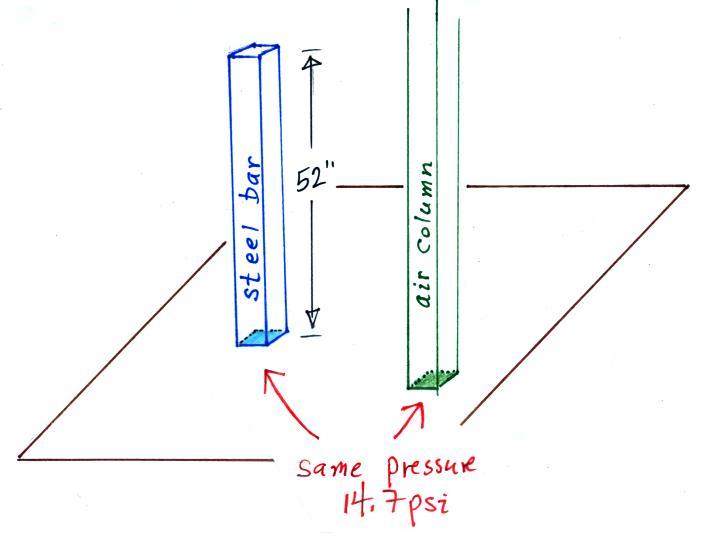
the weight of the 1" x 1" steel
bar 52 inches long is the same as a 1" x 1" column of air
that extends from sea level to the top of the atmosphere
100 or 200 miles (or more) high. The pressure at the
bottom of both would be 14.7 psi.
7. pressure units
Pounds per square inch, psi, are perfectly good pressure units,
but they aren't the ones that most meteorologists use.
Typical sea level pressure
is 14.7 psi or about 1000 millibars (the units used by
meteorologists and the units that we will use in this class
most of the time) or about 30 inches of
mercury. Milli means 1/1000 th. So
1000 millibars is the same as 1 bar. You sometimes see
typical sea level pressure written as 1 atmosphere.
Inches
of mercury refers to the reading on a mercury
barometer. This seems like unusual
units for pressure. But if you remember the chart
earlier, Mercury (13.6 grams/cm3)
is denser than steel ( about 7.9 grams/cm3 ). If we could some
how construct a 1" x 1" bar of mercury it would need to be 30
inches long to equal the weight or the iron bar or the weight
of a tall column of air.
Each of these columns would weigh 14.7
pounds. The pressure at the base of each would be the
same.
A mercury barometer is, we'll find, just a balance. You
balance the weight of a very tall column of air with the weight of
a much shorter column of mercury.
You never know where something you learn in ATMO 170A1 will turn
up. A long time ago, I lived and worked for a short time in
France (I had a really great time and go back occasionally now to
try to ride my bike up some of the famous Tour de France mountain
stages). Here's a picture of a car I owned when I was there
(this one is in mint condition, mine was in far worse shape)

It's a Peugeot 404.
After buying it I took it to the service station to
fill it with gas and to check the air pressure in the
tires. I was a little confused by the air compressor
though, the scale only ran from 0 to 3 or 4. I'm used to
putting about 30 psi or so in my car tires (about 90 psi in my
bike tires). After staring at the scale for a while I
finally realized the numbers were pressures in "bars" not
"psi". Since 14.7 psi is equivalent to 1 bar, 30 psi would
be about 2 bars. So I filled up all the tires and carefully drove off
(one thing I quickly learned was you have to watch out for in
France is the "Priority
to the right" rule).
You can learn a lot from bricks.
For example the photo below (taken in my messy office) shows two
of the bricks from class. One is sitting flat, the other is
sitting on its end. Each brick weighs about 5 pounds.
Would the pressure at the base of each brick be the
same or different in this kind of situation?
Pressure is determined by
(depends on) weight so you might think the pressures would be
equal. But pressure is weight divided by area. In this
case the weights are the same but the areas are different.
In the situation at left the 5 pounds must be divided by an area
of about 4 inches by 8 inches = 32 inches. That works out to
be about 0.15 psi. In the other case the 5 pounds should be
divided by a smaller area, 4 inches by 2 inches = 8 inches.
That's a pressure of 0.6 psi, 4 times higher.
Here's a picture of 5 bricks stacked on top of each other.
Would the pressure under this 5 brick tall pile be
GREATER or LOWER than normal atmospheric
pressure at sea level? (each brick weighs about 5 lbs
and has dimensions 2" x 4" x 8").
There's a total of 25 pounds of weight. Divide that by
the 32 square inch area at the bottom of the pile and yet get
less than 1 psi. That's a lot LOWER than atmospheric
pressure. You'd need a 94 brick tall pile of bricks (470
pounds of bricks) to equal atmospheric pressure.
The main reason I brought the bricks was so that you could
understand what happens to pressure with increasing
altitude.
At the bottom of the pile you would
measure a weight of 25 pounds. If you moved up a
brick you would measure a weight of 20 pounds, the weight
of the four bricks that are still above. The
pressure would be less. Weight and pressure will
decrease as you move up the pile.
8. pressure changes with
altitude
The atmosphere is not too much different from a pile
of bricks. Pressure at any level is determined by
the weight of the air still overhead. Pressure
decreases with increasing altitude because there is less
and less air remaining overhead.
At sea level altitude, at Point 1, the pressure
is normally about 1000 mb. That is determined by the
weight of all (100%) of the air in the atmosphere.
Some parts of Tucson, at Point 2, are 3000 feet
above sea level (most of central Tucson is a little lower
than that around 2500 feet). At 3000 ft. about 10%
of the air is below, 90% is still overhead. It is
the weight of the 90% that is still above that determines
the atmospheric pressure in Tucson. If 100% of the
atmosphere produces a pressure of 1000 mb, then 90% will
produce a pressure of 900 mb.
Pressure is typically about 700 mb at
the summit of Mt. Lemmon (9000 ft. altitude at Point 3) because 70%
of the atmosphere is overhead..
Pressure decreases rapidly with
increasing altitude. We will find that pressure
changes more slowly if you move horizontally.
Pressure changes about 1 mb for every 10 meters of
elevation change. Pressure changes much more slowly
normally if you move horizontally: about 1 mb in 100
km. Still the small horizontal changes are what
cause the wind to blow and what cause storms to form.
Point
4 shows a submarine at a depth of about 30 ft.
or so. The pressure there is determined by the
weight of the air and the weight of the water
overhead. Water is much denser and much heavier than
air. At 30 ft., the pressure is already twice what
it would be at the surface of the ocean (2000 mb instead
of 1000 mb).
Here are a couple of links that I forgot to include in the notes
for class. The first is about the relatively new sport of free diving.
The 2nd is a link
to an article about a diver that made it to a depth of 236
feet but died upon reaching the surface. The divers
hold their breath and must descend and return to the
surface on just a single lungful of air. Death
was caused by the high pressure deep under water forcing
fluid from the blood into the diver's lungs.


